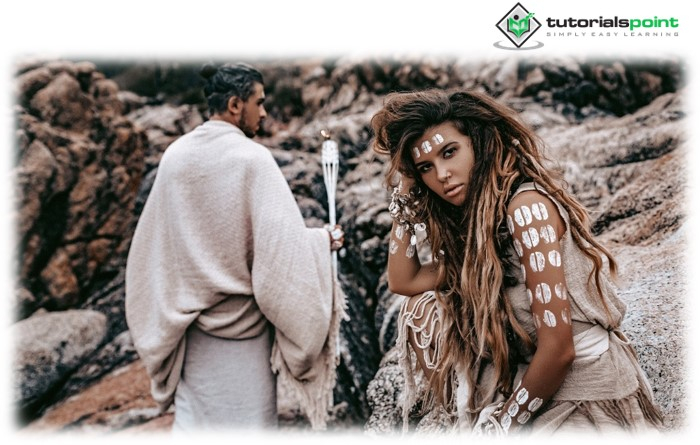

Time, season, diversity, not to mention culture, all influence fashion. Bringing tribal art and fashion together is a brilliant idea that offers everyone a fresh perspective on the world of fashion. The idea of blending fashion with different cultures is not new, yet it never ceases to amaze us. It’s crucial to comprehend the origins of tribal fashion in order to understand the concept behind it. Indigenous people’s visual arts and cultures are referred to as “tribal art” or “ethnographic art. Everyday clothing is made by people from many tribes using their unique fabrics. Simple, cosy, and long-lasting fabric makes up this garment. Although the designs became more complex over time, their simplicity persisted. These designs depict the various ethnic groups and their ways of life.

Trends have always been influenced by social factors. People have turned away from urban trends and gone back to the fundamentals in the socioeconomic climate of today. For this reason, indigenous culture and tribal art have inspired the minds of many designers. With modern silhouettes, tribal fashion offers a classic vintage vibe. Although earthy tones and deep desert hues are great for tribal patterns, brighter colours like orange, yellow, and red have recently been spotted as runway trends.
In today’s world, tribal clothing is on the rise. Not only common people, but fashion designers are also embracing tribal designs to create new looks. The following are the main implications, because of which tribal fashion is becoming famous
Long before Europeans began adopting it into their wardrobes, fringe was a prominent ornament in indigenous attire, and it is a style that frequently resurfaces on catwalks. Balmain is a serial offender when it comes to the use of fringe; most recently, for the Fall 2016 show, when Olivier Rousteing famously had Gigi Hadid and Kendall Jenner switch hair colours, cocktail dresses and gowns were adorned with monochromatic tassels. Fringe was used by Valentino not only as a decoration but also as a fabric for leather skirts for spring. The fabric was cut into sections that resembled oversized fringe. Saint Laurent has introduced fringed backpacks, handbags, and the occasional leather jacket for those looking for more understated fringed accents. The trend has even made its way into footwear, thanks to shoe designers Stuart Weitzman and Giuseppe Zanotti.
With a fresh colour scheme—black and white—tribal fashion’s comeback on the 2016 runways was revitalized. For its Resort 2016 collection, Burberry Prorsum debuted a fitted trench coat with a monochromatic tribal pattern. The National Museum of Immigration History in Paris hosted the presentation of Junya Watanabe’s Spring 2016 collection, which included both monochromatic and vibrant designs, flowy, silky tunics, and enormous accessories. Returning with a tribal influence, Valentino combined vivid designs with mesh to create a fresh interpretation of the naked dress trend.
Heavy beading is another aspect of tribal dress that is sometimes paired with fringe. Fans of this kind of attention to detail can go to jewellery from Night Market for dramatic statement items like beaded necklaces. Tribal prints have long been a source of inspiration for designer Matthew Williamson, and accessories from his 2016 collection incorporate tens of thousands of small beads arranged in vivid patterns. It’s encouraging to see designers go into the origins of different civilizations to gain inspiration from a fresh viewpoint in the ever-evolving and changing world of fashion and design. And it makes sense that as our society grows more and more internationalised, various traditions are starting to permeate the general public’s consciousness and show up in creative works.
Many fashion designers have gotten inspiration for their accessories from striking headgear like royal crowns and tribal headdresses. Fascinator-inspired accessories made a comeback on the spring 2016 runways. Models for Dolce & Gabbana wore fruit-filled bands and whimsical prints, while those for Louis Vuitton wore sleek headbands fit for a space princess. Tribal-inspired accessories weren’t just headpieces at Givenchy’s spring 2016 runway presentation. The brand advanced the choker trend by combining various textures in pieces that covered a model’s entire neck. In the meantime, Valentino unveiled delicate, sculptural jewellery with bone shapes as well as bulky, piled pieces.
Similar to Valentino, Missoni has a long tradition of incorporating indigenous elements. Among Missoni’s devoted fashion tribe, its recognisably rainbow-colored zigzag print—which resembles a Navajo or Aztec print—is a fixture. Many of the dresses and tops in the Missoni Spring 2016 ready-to-wear collection featured yoke-style collars and thick choker necklaces with printed motifs, which were matched by vivid eyeshadow. Additionally, as evidenced by the 2016 Resort collection, the effect might resemble South-western clothing when the fashion house chooses lighter fabrics and hues.
On the catwalk, tribal prints are frequently seen, and Valentino is no exception. The fashion house’s Spring 2014 show began with a minidress and coat that were lavishly embroidered and decorated with designs that looked like Aztec prints. The theme persisted throughout the show, on everything from gowns to jumpsuits. The Navajo people and their woven Ganado-patterned textiles are where other well-known design motifs by Valentino, like diamonds, crosses, and bands, have their origins. Black, white, and red T-shirts and tank dresses by McQ Alexander McQueen uses an eye-catching pattern that incorporates foiled tribal motifs with streetwear designs.
Despite more than merely the rise of “festival” design, tribal clothing has long been a mainstay on the runway. Tribal headdresses, Navajo designs, and other decorations like fringe all fall under the umbrella term “tribal fashion,” which includes a variety of distinct ethnic influences. Due to a mutual love of fashion, this dynamic style enables both creators and wearers to travel to faraway locations. Modern tribal fashion includes more than just the use of materials; it also includes tribal designs, draping techniques, and a manner of accessorising with jewellery made from feathers, bones, wood, and ivory. Statement clothing has evolved from tribal style. With its traditional clothes, colourful designs, and jewellery, the rich tribal culture has added a new statement to the fashion scene.